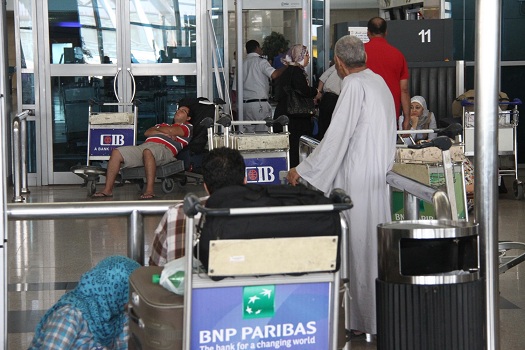Egypt’s Prime Minister Mostafa Madbouly said, on Saturday, that the Historic Cairo development project aims to restore the Egyptian capital’s role as a living centre of heritage and culture.
The project also aims to make it one of the world’s historic tourism destinations, in addition to enhancing its role as a centre for crafts and traditional industries.
During an inspection tour of Fatimid Cairo, Madbouly confirmed the government’s commitment to preserve all areas of Historic Cairo, represented in its rich architectural and cultural heritage.
The Prime Minister also met with many handicraft workers in the area, who talked about the problem of lack of manpower in these traditional industries.
Meanwhile, Madbouly noted that the presence of traditional industries in any historical place increases the area’s value. He also highlighted Egypt’s keenness to maintain the continuity of traditional industries, in order to preserve the value of its historic regions.
He said that the maintenance of traditional industries comes as a part of the state’s endeavour to revive all areas of Historic Cairo. This would also preserve the area’s features as a market for these handcrafted products, which will have a positive impact in attracting tourists to these sites.
Madbouly added that Historic Cairo contains 537 archaeological buildings registered as world heritage sites, meaning that they are internationally considered treasures that must be preserved.
He pointed out that many steps were implemented to restore some of the existing archaeological buildings in this area.
Madbouly noted that the inauguration of the New Administrative Capital (NAC) does not mean that Egypt will stop developing various cities such as Cairo, Alexandria, and Port Said.
Osama Talaat, head of Islamic, Coptic, and Jewish antiquities sector, reviewed the development plan in Fatimid Cairo, which includes Al-Muizz Street, Wekalet El Ghoury, and Al-Khayameya Street.
Talaat confirmed that the proposed plan to develop the area includes preparing training programmes for craftsmen to enhance the quality of handicrafts. This comes alongside the efforts to train new generations to work in various handicrafts.
The sector will also provide training workshops for school and university students on arts and crafts, in addition to establishing a centre to develop designs. It aims to contribute to putting forward new and contemporary designs and uses for Khayameya products.
Khayameya represents a form of textile handicrafts, and features brightly coloured fabric which is used in applique works, cushions, covers, Egyptian cotton bed covers, wall hangings, car covers, and traditional Egyptian galabeyas.




